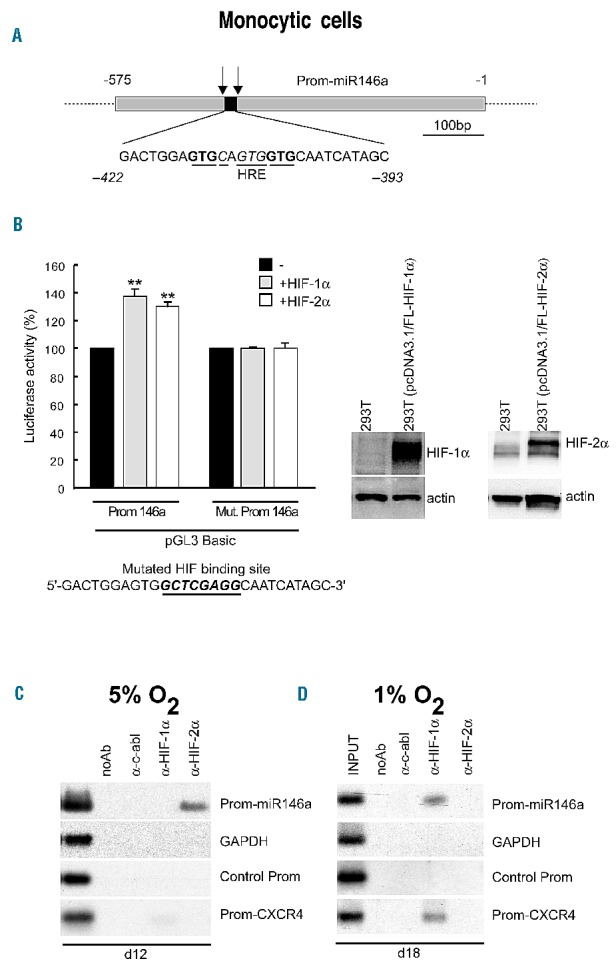Figure 2.

miR-146a is a target of HIF-2α, or HIF-1α, depending on hypoxic levels during monocytic differentiation of hematopoietic progenitor cells. (A) HIF-α putative binding site (HRE) identified on miR-146a Promoter (Prom-miR146a) cloned in a promoterless luciferase vector (pGL3Basic). The arrows indicate the chromatim immunoprecipitation (ChIP) primers used around HRE in Prom-miR146a. (B) Left panels: promoter activity assays performed in Phoenix cells transfected with the pGL3Basic-Prom146a vector alone (black bars), or in the presence of HIF-1α- (gray bars) or HIF-2α- (white bars) expression vectors, as compared to assays with the pGL3Basic-Mut. Prom146a, including the same region of Prom-miR146a but with a mutated HIF binding site (indicated below); Right panels: Western blot analysis of enforced expression of HIF-1α and HIF-2α protein in 293T (pcDNA3.1/HIFs-α) transfected cells, compared to untransfected 293T cells; actin is shown as an internal control of total protein extracts. Data are mean ± SEM values of three independent experiments. **P<0.01. (C) Under 5% O2, miR-146a is a target of HIF-2α, as shown by ChIP experiments performed using nuclear extracts from monocytic cells on day 12 of culture and analyzed by polymerase chain reaction (PCR) for Prom-miR146a and Prom-CXCR4 detection. (D) Under 1% O2, miR-146a is a target of HIF-1α, as shown by ChIP experiments performed on day 18 of culture in nuclear extracts from monocytic cells grown in 1% O2 and analyzed for Prom-miR146a and Prom-CXCR4 by PCR. (C, D) PCR of control for GAPDH used as internal control (GAPDH) and DNA sequence of Prom-146a without HRE (Control Prom) are shown. (B right panels, C, D) One representative experiment of three is shown.
